 |
 |
 |
| |
FUNCTIONAL CURE OF CHRONIC HEPATITIS B IS ASSOCIATED WITH CO-OCCURRENCE OF HBsAg/anti-HBsIMMUNE COMPLEXES WITH ALT FLARES, AND SEROCONVERSION TO NEUTRALISING anti-HBs
|
| |
| |
AASLD 2020 Nov 11-16
Reported by Jules Levin
Hui Xu1, Stephen Locarnini1, Darren Wong2, Renae Walsh1, Sally Soppe1, Danni Colledge1, Rachel Hammond1, Alexander Thompson3, Peter Revill4, Patrick Marcellin5, Anuj Gaggar6 and Nadia Warner1, (1)Victorian Infectious Diseases Reference Laboratories, (2)Gastroenterology, Gastroenterology, (3) Medicine, University of Melbourne, (4)Victorian Infectious Diseases Reference Laboratory, Royal Melbourne Hospital, (5)Department of Hepatology, AP-HP Hopital Beaujon, 92110 Clichy, France, (6)Gilead Sciences, Inc, Foster City, CA, USA
Background: HBsAg specific antibody responses during chronic hepatitis B infection are poorly defined due to lack of standardised detection methodologies. The aim of this study was to investigate the nature of the anti-HBs responses in chronically infected HBV patients during the process of functional cure.
Methods: Longitudinal samples from 25 patients undergoing nucleos(t)ide analogue (NA) treatment were examined, 14 patients achieved functional cure while 11 patients remained infected. HBsAg/anti-HBs Immune complexes (HBs-IC) were quantified using an optimized quantification assay. Epitope-specific anti-HBs responses were detected using a 19-plex assay and neutralization efficacy of anti-HBs was measured using an in vitro HBV infection model.
Results: HBs-IC was detected in all patient's serum samples with a fluctuating profile of peaks and troughs. In the 14 patients who achieved functional cure, 10 had an ALT flare immediately prior to HBsAg loss and seroconversion and of these 10 patients, nine had co-occurring HBs-IC peaks . Patients who did not clear the virus had lower anti- HBs responses compared to those functional cured patients. Anti-HBs derived from functionally cured patients after seroconversion was more potent in neutralizing HBV infection in vitro, and recognised more anti-HBs epitopes compared to anti-HBs from vaccinee controls.
Conclusion: Anti-HBs responses are present and fluctuate during chronic hepatitis B infection and are important for achieving functional cure. Functional cure in the analysed cohort was associated with co-occurring HBs-IC peak and ALT flare prior to clearance, and was followed by the production of anti-HBs that recognize broad epitopes on HBsAg which potently neutralize HBV infection. Failure of virus clearance was associated with inadequate anti-HBs responses in the early phase of NA treatment. These results further demonstrate the importance of anti-HBs responses in clearing HBV infection.
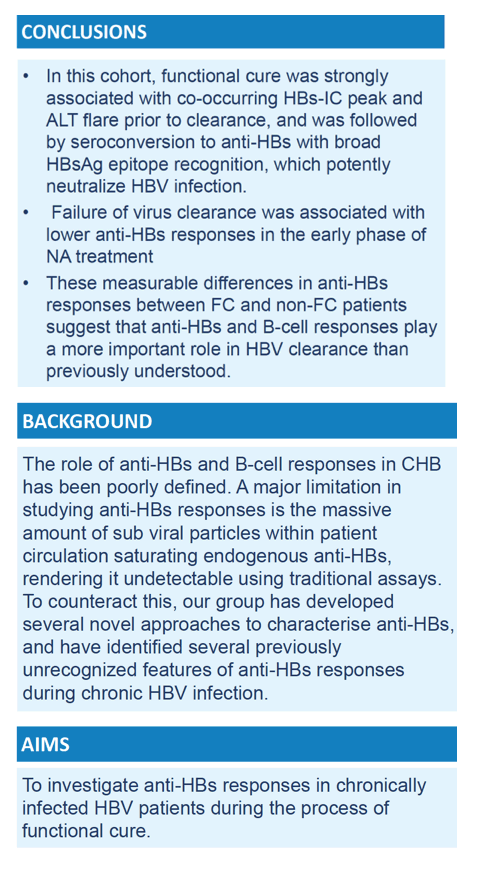
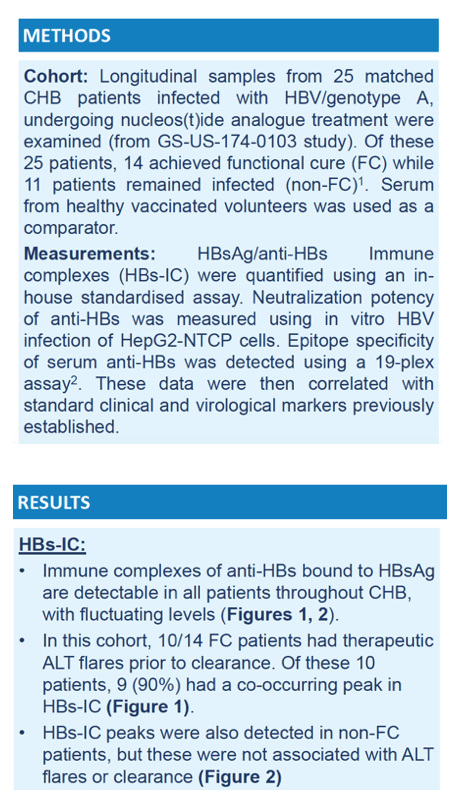
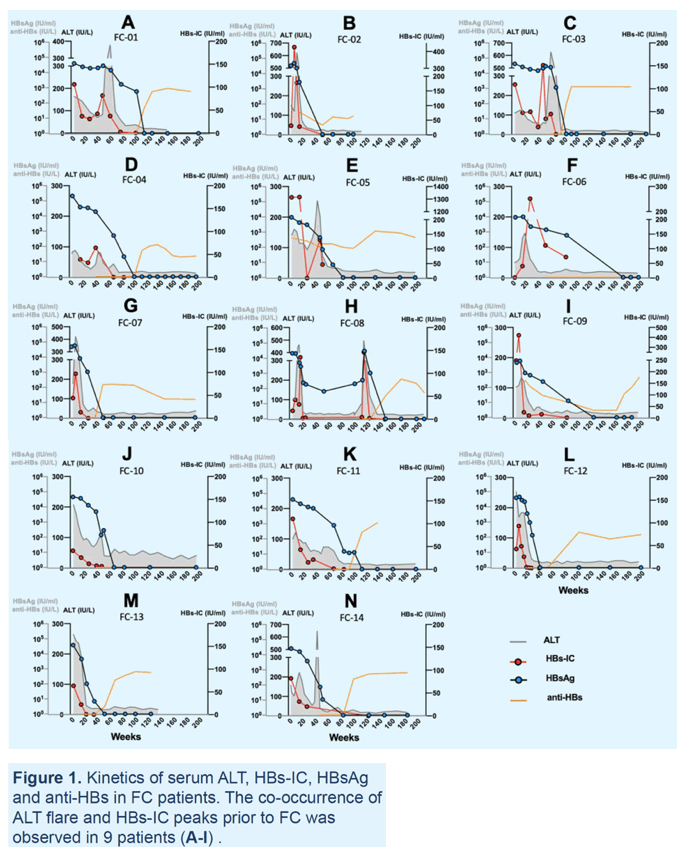
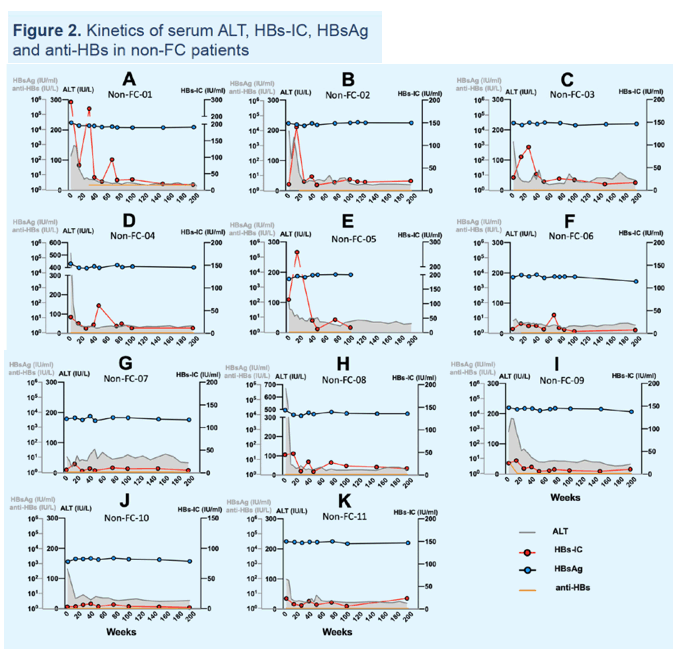
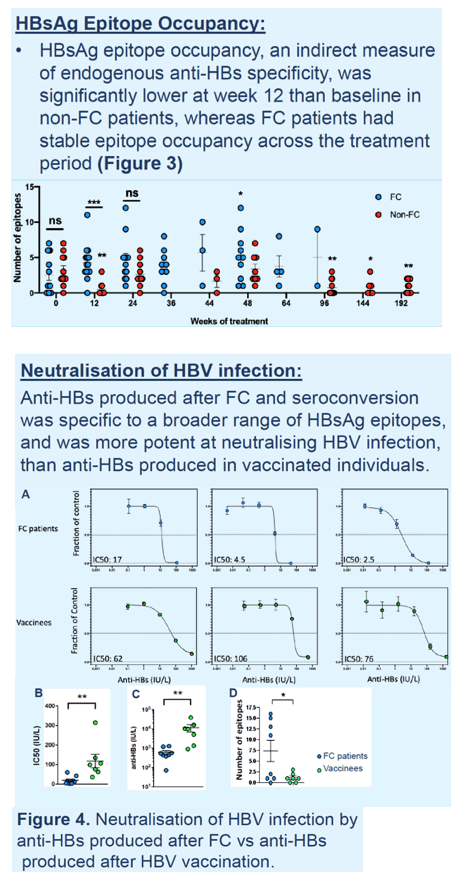
Serum anti-HBs was assessed for its ability to neutralize HBV infection in vitro. Representative logistic dose-response curves from 3FC patients (A, upper panel) and 3 vaccinee controls (A, lowerpanel). (B) Comparison of neutralization potency (IC50) between functionally cured patients and vaccinee controls. (C) Comparison of total serum anti-HBs between functionally cured patients and vaccinee controls. (D) Number of HBsAg epitopes recognized by free serum anti-HBs in FC patients after seroconversion, compared to vaccinee controls.
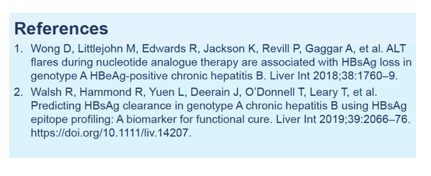
|
| |
|
 |
 |
|
|